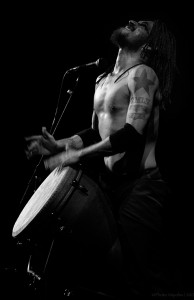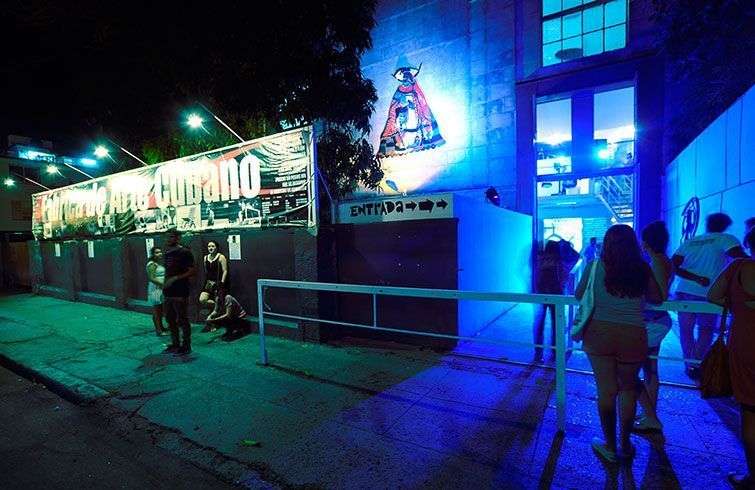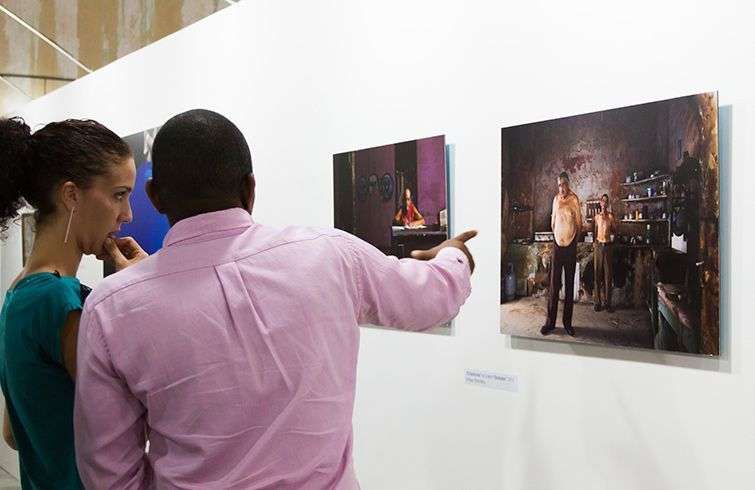Six months after its opening, La Fábrica de Arte Cubano (in English: “Cuban Art Factory”), is a reality, a symbol of these new times, and perhaps the closest thing to the idea of real culture also being profitable. However, it’s not easy; if it were…what would be the fun?
Easy to spot from a distance with its enormous brick chimney, this former cooking oil factory, known simply as La Fábrica, is different. That’s part of its appeal for habitués. It costs more than a museum, but less than the cover at a reggaeton or salsa club, for example.
Concerts, art exhibitions, video screenings, plays, fashion shows, and more—there’s a place for all of it in La Fábrica’s spacious galleries, where art of all kinds can be found in every nook and cranny: from conceptual to figurative, winks at pop art, and even a self-service bar where you can dish up the ideology of your choice, from Gramsci to Marley, for example.
Another incentive for going to La Fábrica will be its internal Wi-Fi, an “intranet” with a database of Cuban artists, from which you will be able to download music, cultural listings, and related information, according to X Alfonso, who emphasized that surfing will be exclusively local…

Dreaming is still free, so La Fabrica’s administrators are not ruling out the possibility of selling tickets online someday. For now, the idea is to have programming set six months ahead of time so that spectator can buy tickets before the dates of La Fabrica festivals, such as “Peace and Love.” The most visible face of this ambitious project is X Alfonso, leader of the Cuban alternative scene, who fell in love with the old factory and fought to obtain it.
He had the help of the Cuban Music Institute and the Ministry of Culture, which are covering some costs until the project becomes self-financing. The mechanism is simple: you pay 50 Cuban pesos—the equivalent of 2 CUC or a little over $2—at the door and receive a card with a running tally of everything you eat or drink, and then you pay at the door on the way out. The only catch is that you can’t lose your card; if you do,you have to fork over 30 CUC.
And that’s a lot of money for most. Even so, X says that 50 peso is a standard cover compared with those of other spaces where offerings are poorer and hours are shorter. He’s open to suggestions, but always from the starting point that La Fábrica is not selling just anything: we’re talking about art and talent. And talent costs…. With respect to the much-desired self-financing, in line with these times in Cuba, this multifaceted artist explains that funds taken in at the door go to his business, a percentage is discounted and then goes to La Fábrica’s maintenance and preservation.
One of the objectives of this “nest of artists”—as X described it in an interview with OnCuba—is to go beyond the old factory’s walls and become involved with the community through environmental and art appreciation projects, and by providing workshops for amateur artists and for students from schools such as the Higher Institute of Design, the Faculty of Audiovisual Media, and the San Alejandro Academy of Art. As things progress, a manual or guide will take shape for replicating this experience, which aspires to be sustainable, in Santiago de Cuba and Santa Clara, he said. He personally plans to be behind every new project, X affirms.
When asked why he gets involved in these complications, he tells us that his goal is to leave something behind in life. “I think something like this is super, where people can come and interact with artists, where there are 200 creators generating ideas,” he explains. He doesn’t know whether or not the current reality in Cuba is more or less conducive to making his longstanding dream come true, just that this was the time to do it.
And he only hopes that La Fábrica will encourage more projects to contribute to enrich Cubans’ spirituality. “I hope people copy us…” he says.












